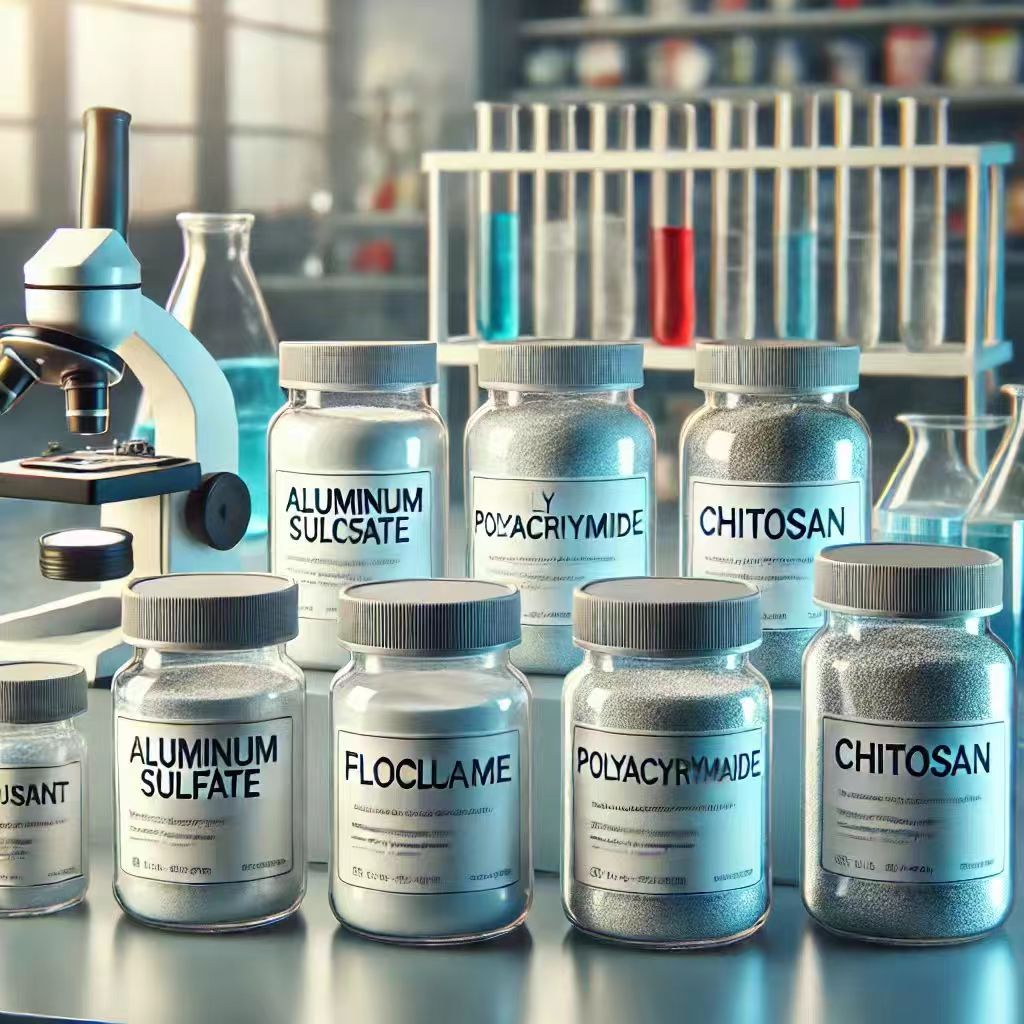How Do Flocculants Work?
The working principle of flocculants primarily involves physical and chemical actions. By altering the properties of suspended particles and colloidal substances in water, flocculants facilitate their aggregation and sedimentation, thereby achieving solid-liquid separation. Specifically, the working principles of flocculants can be summarized as follows.

I. The working principles of flocculants
1. Charge Neutralization
Principle
High-valent ions in flocculants (such as aluminum ions, iron ions, etc.) can neutralize the negative charges on the surface of suspended particles in water, reducing the surface potential of the particles. This decreases the repulsive forces between particles and promotes their aggregation.
Effect
The process of charge neutralization effectively destabilizes the previously stable and uniformly dispersed suspended particles in water, causing them to lose their individual stability and initiate a process of aggregation. This, in turn, results in the formation of larger, more cohesive particle clusters that are more easily removed from the water system through sedimentation or filtration.
2. Adsorption Bridging
Principle
Flocculant molecules (such as polymer compounds) can adsorb onto the surface of particles. Through the active groups on their molecular chains, these flocculants form a “bridge” structure by reacting with substances on the particle surfaces. This structure can link multiple particles together, forming larger flocs.
Effect
The phenomenon of adsorption bridging exerts a profound influence on the interaction forces between particles, significantly amplifying their strength and fostering a tighter bond among them. This enhanced interaction leads to a more pronounced aggregation of particles, as they are drawn closer together by the strengthened attractive forces. Consequently, the sedimentation process is accelerated, as the larger, more densely packed particle clusters settle more rapidly due to their increased mass and reduced buoyancy.
3. Network Capture and Sweeping
Principle
Some flocculants (such as high molecular weight polymers) can form a three-dimensional network structure in water. These network structures can capture and enclose suspended particles in the water, then use sweeping action to collect the particles within the network, forming larger agglomerates.
Effect
The implementation of network capture and sweeping techniques serves as a potent enhancer of particle aggregation efficiency, significantly facilitating the process of removing suspended substances from water. By strategically positioning capture networks, particles are intercepted and directed towards each other, fostering more frequent collisions and subsequent aggregation.
4. Other Mechanisms
In addition to the above three main mechanisms, flocculants may also promote particle aggregation and sedimentation through other means. For example, by altering the pH value or ion concentration of the solution to affect the charge state of the particles; or by enhancing the attraction between particles through special interactions between flocculant molecules and particle surfaces (such as van der Waals forces, hydrogen bonds, etc.).
II. The process of flocculant flocculation
The process of flocculant flocculation is a complex and delicate physical and chemical process, mainly involving stages such as particle destabilization, aggregation, and sedimentation. The following are the detailed steps of the flocculant flocculation process:
1. Dispersion of flocculant molecules
The flocculant is first added to the water or liquid to be treated.
In solution, flocculant molecules undergo preliminary dispersion to ensure sufficient contact with suspended particles.
2. Diffusion towards the solid-liquid interface
The dispersed flocculant molecules will diffuse towards the solid-liquid interface (i.e. the surface of suspended particles).
This step is a prerequisite for the interaction between flocculant molecules and suspended particles.
3. Adsorbed on the surface of particles
The flocculant molecules adsorb onto the surface of suspended particles through physical or chemical reactions such as electrostatic attraction, chemical bonding, etc.
Adsorption causes the surface of suspended particles to carry charges opposite to those of flocculant molecules, thereby reducing the electrostatic repulsion between particles.
4. Collision and aggregation between particles
Suspended particles adsorbed with flocculant molecules undergo Brownian motion in solution or collide under external forces such as stirring.
Due to the reduction of electrostatic repulsion and the bridging effect of flocculant molecules, colliding particles are prone to gather together and form micro flocs.
5. Growth and sedimentation of micro flocs
Micro flocs gradually grow into larger and denser flocs through continuous collisions and adsorption of other suspended particles.
When flocs reach a certain level, they will settle under the action of gravity due to their large volume and weight.
6. Precipitation and Separation
Flocks settle in water, forming sludge or sediment.
These sediments can be collected and separated through sedimentation tanks or precipitators to achieve solid-liquid separation.
Conclusion
In summary, the working principle of flocculants is a complex process involving various physical and chemical actions. In practical applications, these mechanisms often occur simultaneously and work synergistically to promote the aggregation and sedimentation of suspended particles and colloidal substances in water. Therefore, selecting the appropriate flocculant and determining the optimal usage conditions are key to achieving efficient solid-liquid separation.
